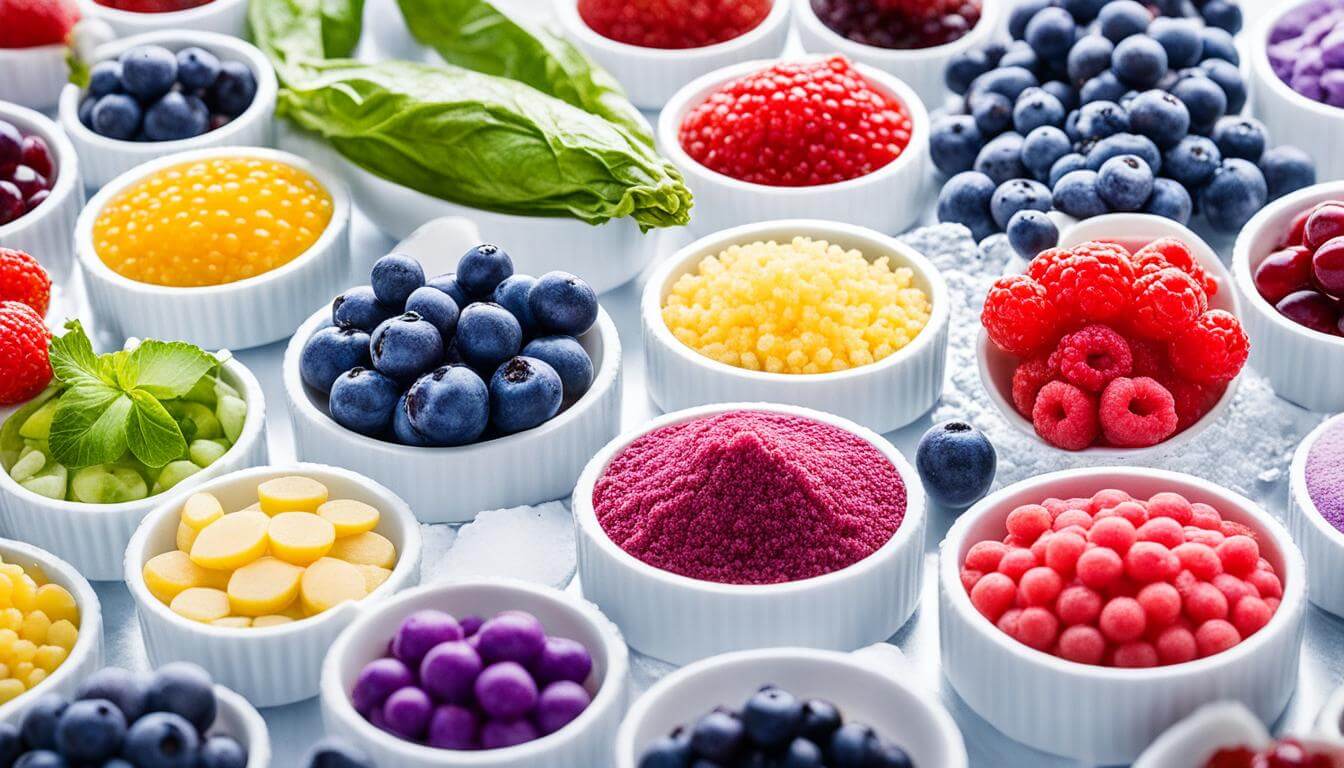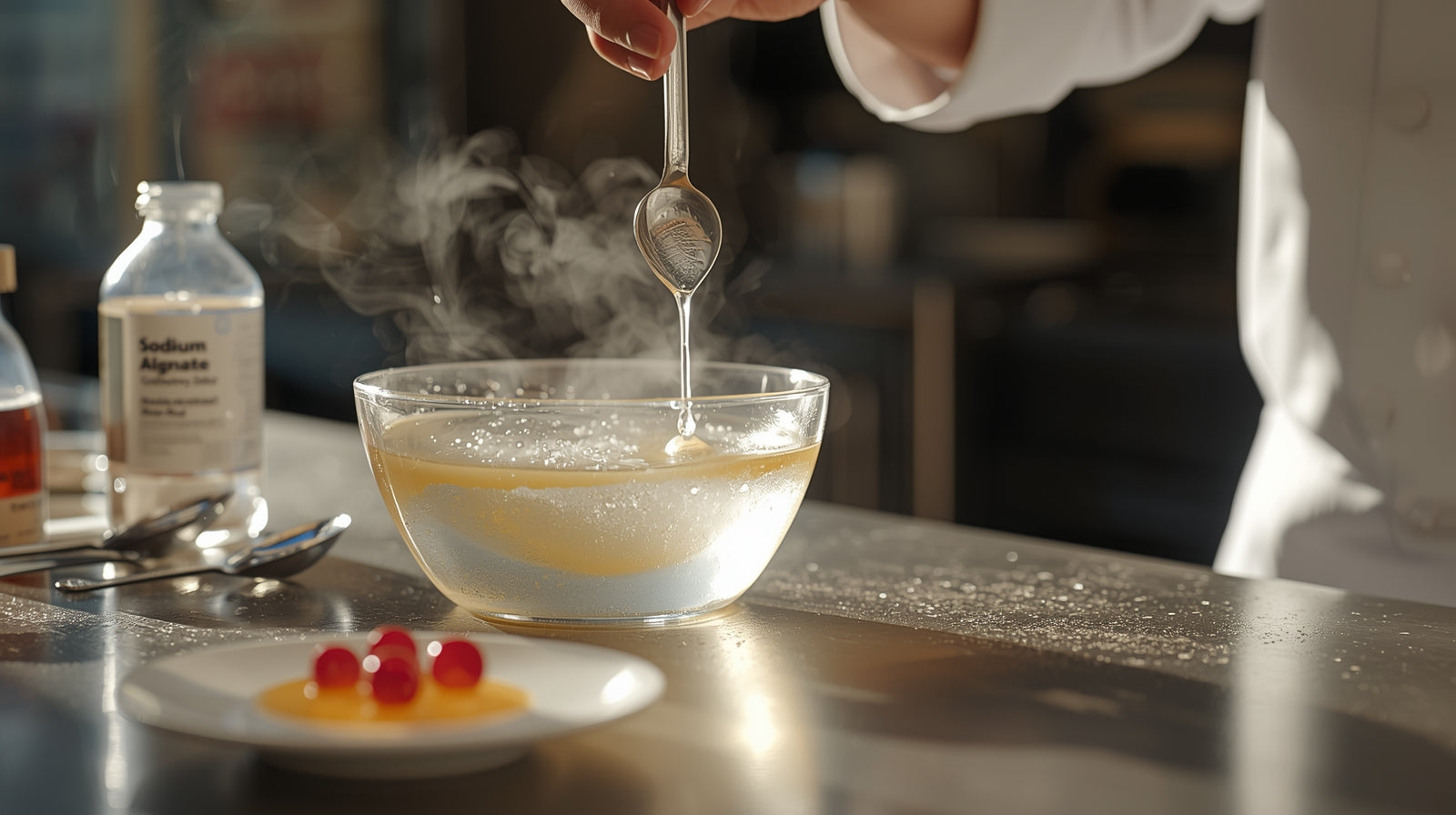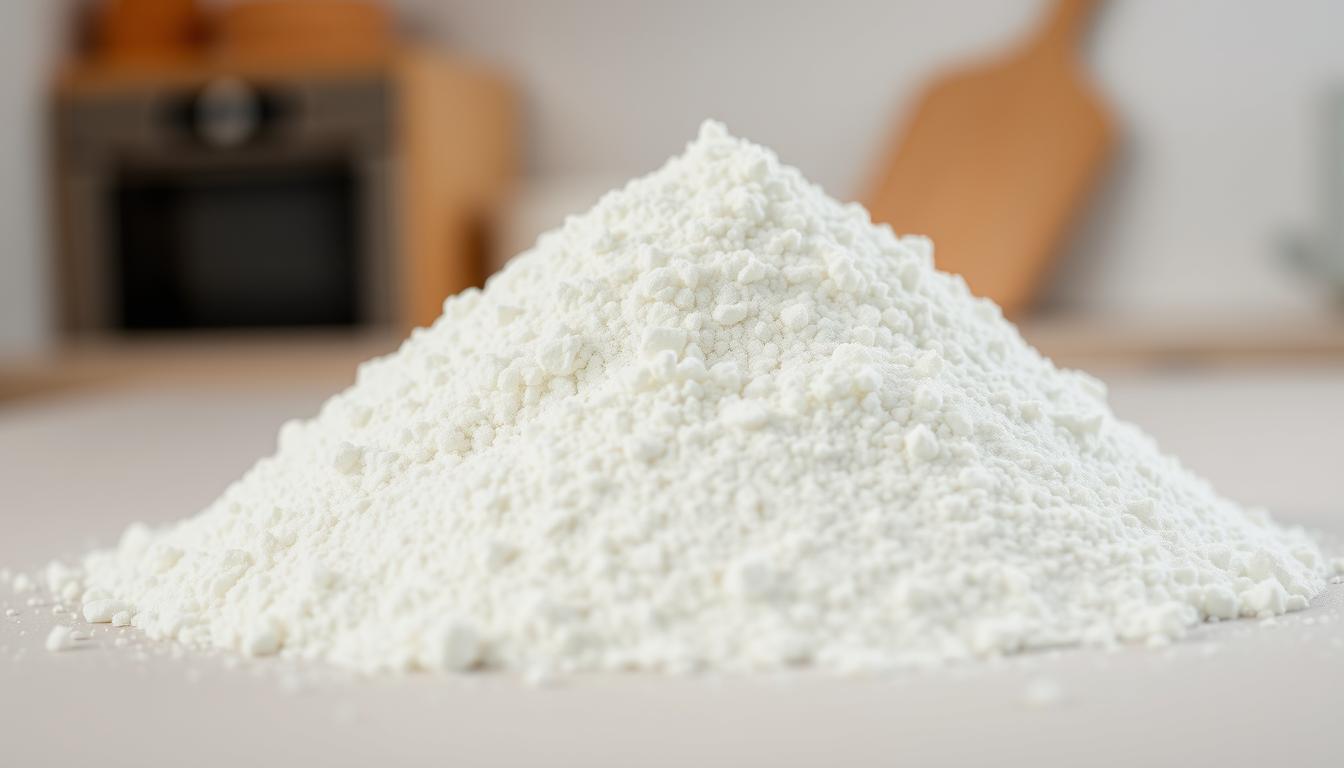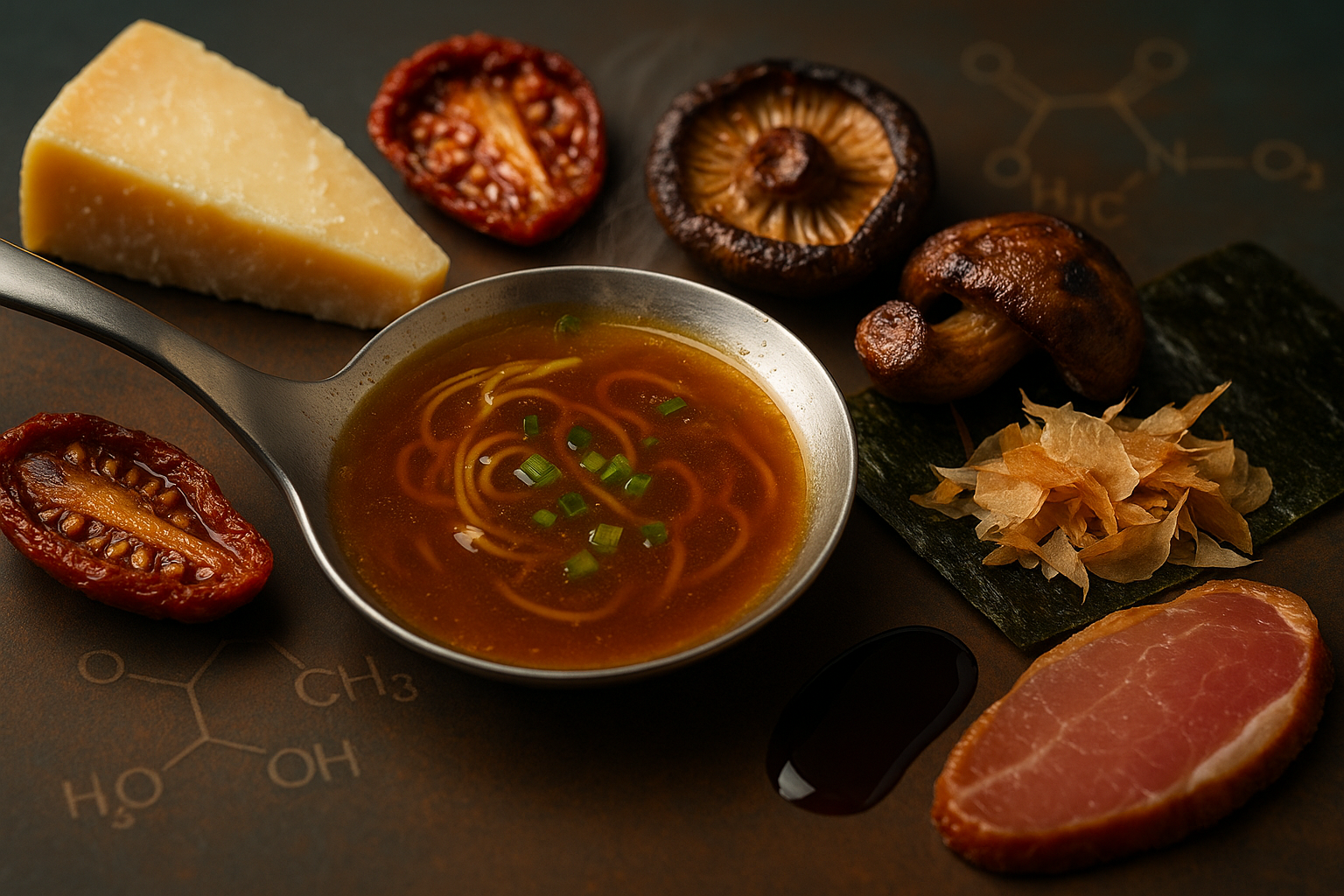
Lipid Oxidation in Foods
SUBSCRIBE TO OUR BLOG
Promotions, new products, and recipes.
When it comes to cooking, ingredient quality is key for good flavor and health. Cooking oil sometimes starts to smell or taste weird. This is often because of lipid oxidation. This process happens when fatty acids and oxygen mix, making food quality worse. Lipid oxidation can make food taste bad and shorten its shelf life. It also might affect your health. The way molecules react with oxygen can change the oil's health benefits. This shows how important it is to balance fats and their stability.
Knowing about lipid oxidation helps us understand food longevity. It affects everything from salad dressings to the taste of steak. These unseen reactions between fats and oxygen change food from fresh to spoiled. Behind each bad smell or taste, there's a complex interaction of molecules. These can change how we enjoy food and affect our health.
Key Takeaways
- Lipid oxidation is a natural process that worsens food quality and shortens shelf life.
- This process can make food taste bad and be less healthy.
- The rate of lipid oxidation is influenced by different factors, like the type of fat and the presence of certain substances.
- Antioxidants like vitamins C and E are important in stopping this degradation.
- Understanding lipid oxidation can help us store food better and keep it stable.
Understanding Lipid Oxidation and Food Quality Degradation
Food processing is key to keeping our foods fresh and safe. It manages lipid oxidation, which is key for taste and health. When fats react with oxygen, it starts a chain reaction. This hurts the food's quality and safety.
What is Lipid Oxidation?
Lipid autoxidation begins with free radicals. It happens in foods with unsaturated fats. This process has three stages: start, continue, and stop. It leads to bad tasting and smelling foods like meats and dairy.
Impact of Oxidized Lipids on Protein Structure and Function
The mix of lipid oxidation products and proteins is a big deal in food science. It changes proteins, causing them to clump together. This affects how food feels, tastes, and its health benefits.
Health Risks Associated with Lipid Oxidation Products
Eating foods with a lot of lipid oxidation is bad for your health. For example, myosin in meats can get damaged. This changes the meat's texture and how it works. It is vital to understand the health risks to keep food safe.
We must carefully process foods to avoid spoilage. The food industry works hard to keep foods fresh longer while cutting health risks from oxidation.
Elevate your culinary creations with our advanced hydrocolloids and kitchen tools. Discover the difference on our product page.
The Chemistry of Lipid Oxidation in Culinary Oils
The quality and stability of cooking oils depend on the complex chemistry of lipid oxidation. This process leads to oils becoming rancid, changing their taste and the taste of the foods they're used in. The main issue in this process is how unsaturated fats react with oxygen, which can happen in different ways.
Exposure to air, light, and certain metals starts the oxidation of oils. This creates free radicals that lead to more instability. Since cooking oils have unsaturated fats, they're more likely to get affected by these reactions.
Auto-oxidationis a major cause of oil oxidation. It's a chain reaction started by the loss of a hydrogen atom. This leads to the forming of unstable molecules, which can end in the oil going bad.
Photooxidation happens with light exposure, especially UV light. It makes oxygen react faster with the fats. Enzymatic oxidation happens with enzymes, like lipoxygenases, which also speed up fat oxidation.
The shelf life of cooking oils and the foods cooked with them can be greatly shortened by oxidation. Stopping oils from going bad involves keeping them away from air, light, and heat. Including natural antioxidants can also help by stopping the free radicals.
| Packaging Method | Shelf Life (hours) | Study Source |
|---|---|---|
| MAP (Modified Atmosphere Packaging) | 610-618 | Lorenzo J.M., Gomez M. (2012) |
| Overwrap | 610-618 | Lorenzo J.M., Gomez M. (2012) |
| Vacuum | 610-618 | Lorenzo J.M., Gomez M. (2012) |
| Post-Cooking Lipid Oxidation Level | 769-777 | Alfaia C.M.M. et al. (2010) |
The table shows different packaging methods and their effects on meat shelf life. It also shows how cooking affects meat fat oxidation. Adding natural antioxidants to meats may help extend their shelf life by preventing oxidation.
Understanding the chemical reactions involved and using the right prevention methods is crucial. It helps ensure that cooking oils, and the foods made with them, stay safe and tasty.
Lipid Peroxides: Formation and Effects on Food Attributes
Poly-unsaturated fatty acids in foods are at risk of oxidation. This affects the oxidative stability of food products. Research since 2003 has increased, highlighting the importance of controlling lipid peroxides in food science.
Flavor degradation is a major issue caused by lipid hydroperoxides. These are formed through cleavage reaction events. They create a mix of volatile organic compounds, like aldehydes. These compounds are mainly responsible for the bad flavors in spoiled food.
Role of Lipid Peroxides in Flavor Degradation
The decline in flavor is due to chemical changes in food. Specifically, oxidation in poly-unsaturated fatty acids leads to rancid tastes. These reactions lower nutritional value and reduce food's shelf life.
In meat, the oxidation process creates harmful aldehydes. They damage proteins such as myosin. This affects both the texture and taste of meat, lowering food quality and safety.
Detecting Lipid Hydroperoxides as Indicators of Food Spoilage
Lipid hydroperoxides are early signs of food going bad. Food scientists use food processing techniques to measure spoilage. Techniques include infrared spectroscopy and checking peroxide levels. This helps to know how long food will last.
One method used is the sensitive iodometric assay for finding hydroperoxides. This information reveals how much oxidative stress is present. It shows risks for diseases like Alzheimer's and thrombosis. This data helps in improving food safety and public health.
| Fatty Acid Type | Characteristic Impact on Oxidative Stability | Common Occurrence in Foods |
|---|---|---|
| Linoleic acid (18:2 n − 6) | High in polyunsaturation leading to increased lipid peroxidation | Pig tissue and adipose layers |
| Conjugated Linoleic Acid (CLA) | Production of lipid peroxides can lead to the manifestation of toxic compounds | Beef, particularly from rumen biohydrogenation |
Dealing with lipid peroxides is crucial, as they cause flavor degradation. They can also lead to diseases. The buildup of reactive compounds makes finding good food processing techniques essential. This is vital for public health and preventing food spoilage.
Understanding and managing lipid oxidation is key. It involves many reactions, including creating lipid hydroperoxides and turning them into aldehydes. This shows how important food science is to our health.
Lipid Oxidation
To keep foods fresh, we need to stop fats and oils from going bad, a process called lipid oxidation. This is key for food preservation. If lipids degrade, they hurt the nutritional value and change the texture of food products. This can lead to bad tastes and smells. Researchers have found out a lot about how lipid degradation pathways work. They've shown that role of free radicals is huge in breaking down food. Studies like "Lipid oxidation in meat: Mechanisms and protective factors" show how important antioxidants are in stopping these reactions.
Antioxidants are great at fighting oxidation, which makes fats stable and keeps meat fresh longer. Research from "Shelf life of fresh foal meat under MAP, overwrap, and vacuum packaging conditions" and "Active packaging films with natural antioxidants to be used in the meat industry" shows packaging is crucial. It keeps food fresh and full of nutrients by blocking oxygen, light, and lipid oxidation in foods.
The way food feels can be linked to how much the lipids inside have oxidized. Testing the lipid oxidation levels has gotten better with new methods like checking for certain chemicals that signal oxidation. By using natural antioxidants and better packaging, we can protect food quality.
| Antioxidant Type | Effect on Lipid Oxidation | Application in Meat Products |
|---|---|---|
| Natural Extracts | Inhibits free radicals | Vacuum and modified atmosphere packaging |
| Chelating Agents | Binds metal catalysts | Active packaging films |
| Vitamins E & C | New bullet | Direct addition to meat mixtures |
To sum up, stopping lipid oxidation helps keep food's taste, nutrition, and texture good for longer. Using antioxidants and the latest in packaging helps a lot. Future research on antioxidants' efficacy will help us find better ways to keep food at its best. This ensures people enjoy safer, tastier meals.
Antioxidant Strategies to Combat Lipid Rancidity in Foods
To keep food quality high and extend shelf life, the food industry is always looking for new ideas. Antioxidants help a lot in fighting the bad effect of fats going rancid. They are not just added for stronger food but also keep cooking oils and the taste of food good.
Food science is now showing us many natural antioxidant sources. These are especially good for keeping meat fresh because fat in meat can go bad easily. Plant-based antioxidants are being studied for making food last longer and taste better without odd flavors.
Importance of Antioxidants in Preventing Lipid Oxidation
Antioxidants are chemicals that stop harmful oxidation. They keep fats safe from free radicals that can start the rancidity. This is why they’re often added to packaging and foods, helping keep our food safe and nutritious.
Exploring Natural Sources of Lipid Antioxidants for Food Fortification
The search for natural ways to keep food fresh has turned up lots of plant extracts full of antioxidant power. Adding extracts from berries, chestnuts, and guarana seeds to food has shown to slow down oxidation. This means better food quality using natural, earth-friendly ingredients.
Studies show that these natural extracts can also be used in special packaging films. This packaging helps stop fat from going bad, making meat products stay fresh longer. It’s good news for both the people making food and those eating it.
Another smart idea is to wrap antioxidants in tiny capsules to mix them better into food. This method lets antioxidants work slowly over time, keeping oxidation away.
Talking more about these methods, look at making "Lacón," a type of dried meat. The mix of fats and how it's preserved affects its final taste and quality. That’s why the industry loves using antioxidants. They make sure our food stays great-tasting and appealing for a long time.
Factors Influencing Lipid Oxidation in Different Food Matrices
Knowing the factors influencing lipid oxidation in food matrices helps improve food safety and quality. The mix of unsaturated fatty acids and oxygen exposure greatly affects oxidation. Foods with more unsaturated fats are more likely to develop off-flavors and rancidity.
To predict shelf life better, we must understand lipid oxidation kinetics. A good model considers how things like temperature and air speed up oxidation. This way, food producers can predict and fight oxidation, preserving food longer.
Key methods for measuring lipid stability focus on tracking oxidation products. The rise of hydroperoxides as early markers is crucial. These approaches show how spoiled the food is and help predict future spoilage with advanced stats.
- Degree of fatty acid unsaturation
- Oxygen concentration and exposure
- Temperature and light conditions
- Presence of metal ions and catalysts
- Antioxidative agents
The table below gives insights from recent studies on lipid oxidation. It highlights different factors and their effects in various food contexts.
| Study Characteristics | Factors Examined | Impact on Oxidation |
|---|---|---|
| Meat Lipid Oxidation (2004-2018) | Cooking methods, muscle type, fatty acids, antioxidants | Varied levels of oxidation kinetics in meats leading to rancidity and aroma changes |
| Volatile Compounds as Indicators | Temperature, pressure, oxygen concentration | Informing on aroma and flavor profiles of dry-cured meats |
| Natural Antioxidant Efficacy | Berries, chestnut extracts, bioactive peptides | Extended shelf life and mitigated lipid oxidation in meat products |
| Impact of High-Pressure Treatments | Processing pressures on protein and lipid interactions | Altered physical and functional properties in meats |
| HS-SPME-GC/MS Analysis | Characterization of volatile compounds | Detailed profiling of dry-cured meat oxidation stages |
Controlling these factors is vital for keeping food quality high, especially in foods with unsaturated fatty acids. Ongoing research on lipid oxidation effects is leading to new ways to protect food. Innovations like microencapsulation and natural antioxidants offer new methods for preserving food and improving stability.
The Role of Packaging in Minimizing Lipid Oxidation
The food industry is always looking for ways to make food last longer and stay fresh. Packaging plays a key role in this. Good packaging not only protects food but also helps keep fats stable and prevents them from going bad. By using new packaging methods, we can keep foods like meats fresh for longer.
Evaluating the Efficacy of Packaging Materials
Studies have shown that the type of packaging can greatly affect meat's freshness. For example, beef packed with a lot of oxygen can see an increase in bad oxidation by up to 767%. This means the meat's quality can drop because of too much oxygen. On the other hand, vacuum packaging keeps beef's color fresh up to 609% better than other methods.
Innovative Packaging Techniques for Lipid Stability in Processed Foods
The food industry is fighting oxidation by using new packaging. This includes active packaging with natural antioxidants and special atmospheres to lower oxidation. These new methods have significantly cut down oxidation in beef patties kept cold, by up to 233%. Also, consumers have really liked beef steaks stored this way, showing approval rates up to 725%.
| Package Type | Impact on Lipid and Protein Oxidation | Sensory Acceptance |
|---|---|---|
| High-Oxygen Modified Atmosphere | 85% to 767% | N/A |
| Vacuum Skin Packaging | 604% to 609% (Color Stability) | N/A |
| Combined Antioxidants and Modified Atmosphere | 226% to 233% | N/A |
| Modified Atmosphere Packed Beef Steaks | N/A | 720% to 725% |
The way we think about packaging is changing in the food industry. We are now aiming for packaging that doesn't just protect food. We want packaging that also keeps our food tasting fresh and good for longer. The future of packaging looks promising, with ideas that go beyond just storing food to actually improving how fresh and delicious it stays.
Conclusion
Understanding how to lessen lipid oxidation's effects is crucial for our food systems. This knowledge is key to keeping our food's quality high. Factors causing food quality to drop highlight the need for strong answers in food processing.
From meats to oils, oxidative damage is a big threat. It's made worse by cooking, which changes the food's properties. The meat industry and others should use antioxidants from natural sources, like berries, to improve food preservation.
New technologies, like microencapsulation in meat processing, show the food industry's dedication to research. These methods increase nutrition and help fight health risks from lipid peroxidation. Studies on ELAOOH and LAOOH isomers mark a step forward in preserving food and cosmetics. Identifying these isomers leads to better methods for analyzing food degradation.
Innovative packaging and natural antioxidants help fight lipid oxidation. These strategies are vital for public health and keeping our food supply safe. As harmful compounds in fried meals pose risks, monitoring and action are crucial for global health. We all must work to keep food safe and nutritious with science.
FAQ
What is lipid oxidation and how does it affect food quality and shelf life?
Lipid oxidation happens when unsaturated fatty acids in food combine with oxygen. This creates free radicals and lipid peroxides. These substances can cause off-flavors, rancidity, and lost nutrients, which reduces food quality and shelf life.
What impact do oxidized lipids have on protein structure and function in foods?
Oxidized lipids change how proteins stick together and their structure. This affects the texture, taste, and quality of food. It makes food less nutritious and appealing.
Are there health risks associated with consuming foods that contain lipid oxidation products?
Yes, eating foods with lipid oxidation products can be harmful. They may lead to inflammation, cell damage, and chronic diseases. These products can also harm muscle in meats, affecting their quality.
What are the primary concerns regarding lipid oxidation in culinary oils?
Oxidation in culinary oils can degrade nutritional and sensory qualities. It shortens oil shelf life and leads to harmful compounds. This makes the oils less healthy and tasty.
How do lipid peroxides contribute to flavor degradation in foods?
Lipid peroxides break down into compounds like alcohols and aldehydes. These cause off-flavors and bad smells, making food less enjoyable to eat.
How can lipid hydroperoxides be detected to indicate food spoilage?
To find lipid hydroperoxides, methods like measuring peroxide values and using chromatography are used. These tests help predict food spoilage and quality issues.
Why are antioxidants important in preventing lipid oxidation in foods?
Antioxidants stop free radicals and halt oxidation reactions. They are key to keeping food's nutritional value, extending shelf life, and ensuring safety.
Can natural sources of antioxidants be used for food fortification?
Yes, natural antioxidants, like those in berries and plants, help fortify food. They make lipids more resistant to oxidation, extending shelf life.
What factors influence lipid oxidation in different food matrices?
Lipid oxidation can be affected by unsaturated fatty acids, oxygen, light, temperature, and metals. Managing these factors is vital for keeping food quality.
How does packaging influence the oxidative stability of processed foods?
Good packaging protects against oxygen, light, and other factors that speed up oxidation. New packaging technologies greatly improve food's shelf life and quality.
What innovative packaging techniques are being used to enhance lipid stability in foods?
New packaging methods include active packaging that absorbs oxygen or releases antioxidants. There's also intelligent packaging that shows product quality over time. These innovations help reduce oxidation in foods.
Source Links
- https://www.ncbi.nlm.nih.gov/pmc/articles/PMC6827023/
- https://en.wikipedia.org/wiki/Lipid_peroxidation
- https://www.sciencedirect.com/topics/medicine-and-dentistry/lipid-oxidation
- https://journals.plos.org/plosone/article?id=10.1371/journal.pone.0121729
- https://link.springer.com/chapter/10.1007/978-1-4020-6486-9_5
- https://www.frontiersin.org/articles/10.3389/fnut.2023.1192199
- https://www.ncbi.nlm.nih.gov/pmc/articles/PMC4066722/
- https://www.intechopen.com/chapters/63958
- https://www.nature.com/articles/s41577-021-00618-8
- https://www.ncbi.nlm.nih.gov/pmc/articles/PMC4597862/
Well That's the Story. I hope it was helpful. Let's Hear Your Thoughts!
We've shared our insights, and now it's your turn! Have an opinion, a question, or a story to share about this article? Dive into the comments below and join the conversation. Your voice is a crucial part of this community, and we're eager to hear what you have to say.
Thought that was fascinating? Here’s another story you might like:
See: The Hydrocolloid Glossary
For further reading:
Hero Ingredients: How Hero Components are Shaping Food Choices in 2024
Every dish deserves the perfect texture to complement its flavors. Why settle for anything less than perfection? With Cape Crystal Brands Food Texture products, you don't have to. Whether you're crafting velvety sauces, glistening gels, or fluffy mousses, our range ensures you get the consistency you desire every single time.
Don't just cook—create masterpieces. Dive into the world of culinary textures and elevate every meal. Shop now and experience the magic of Cape Crystal!
🛍️ Click Here to Explore Cape Crystal Brands Food Texture Products!

Chef Edmund
Edmund McCormick is the founder of Cape Crystal Brands and EnvironMolds LLC. He is the author of several non-fiction “How-to” books, past publisher of the ArtMolds Journal Magazine, editor of Beginner's Guide to Hydrocolloids, and author of six eBook recipe books available for download on this site. He resides in Far Hill, NJ and lives and breathes his food blogs as both writer and editor. You can follow him on Twitter and Linkedin.

|
About the Author Ed is the founder of Cape Crystal Brands, editor of the Beginner’s Guide to Hydrocolloids, and a passionate advocate for making food science accessible to all. Discover premium ingredients, expert resources, and free formulation tools at capecrystalbrands.com/tools. — Ed |
Enjoyed this post? Subscribe to The Crystal Scoop
Food-science tips, ingredient know-how, and recipes. No spam—unsubscribe anytime.
- Choosing a selection results in a full page refresh.





